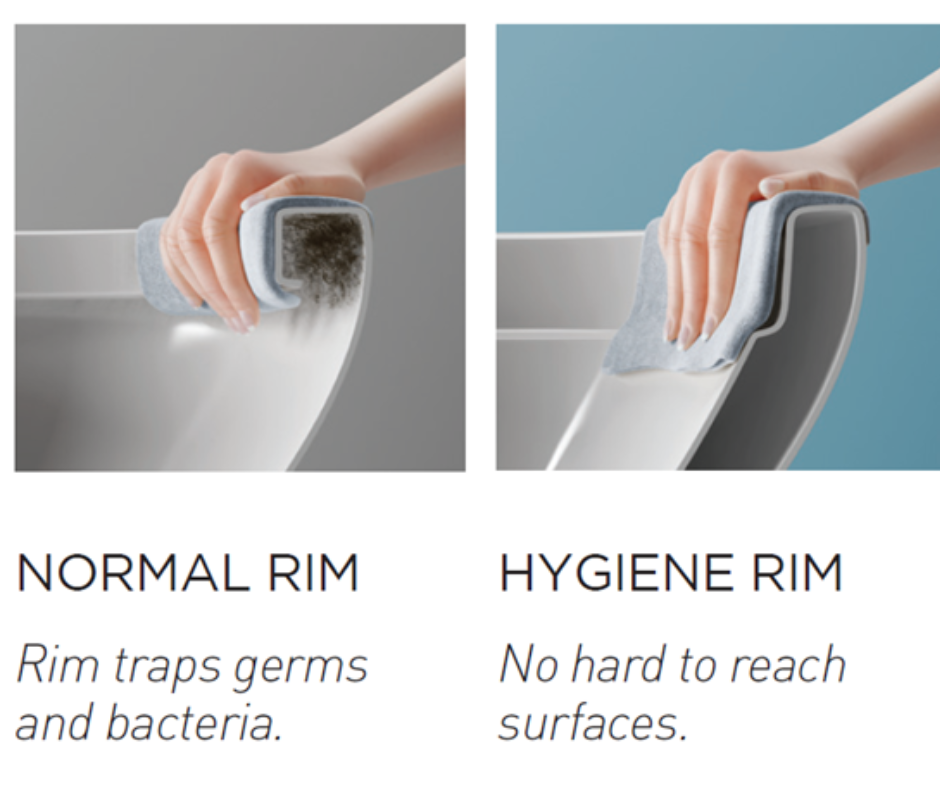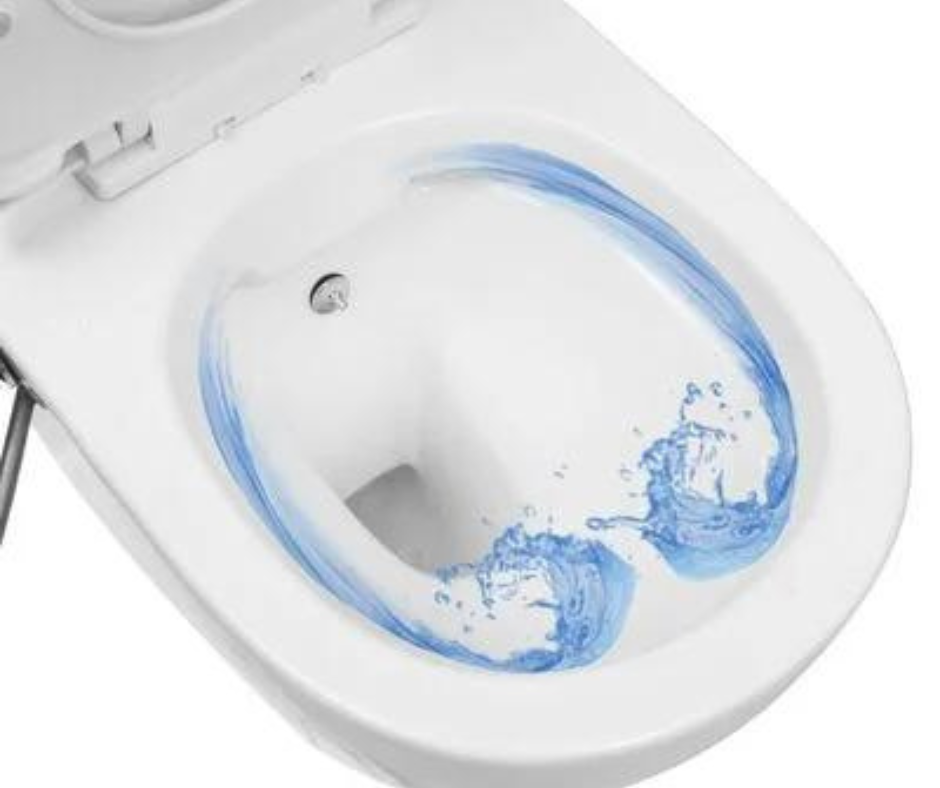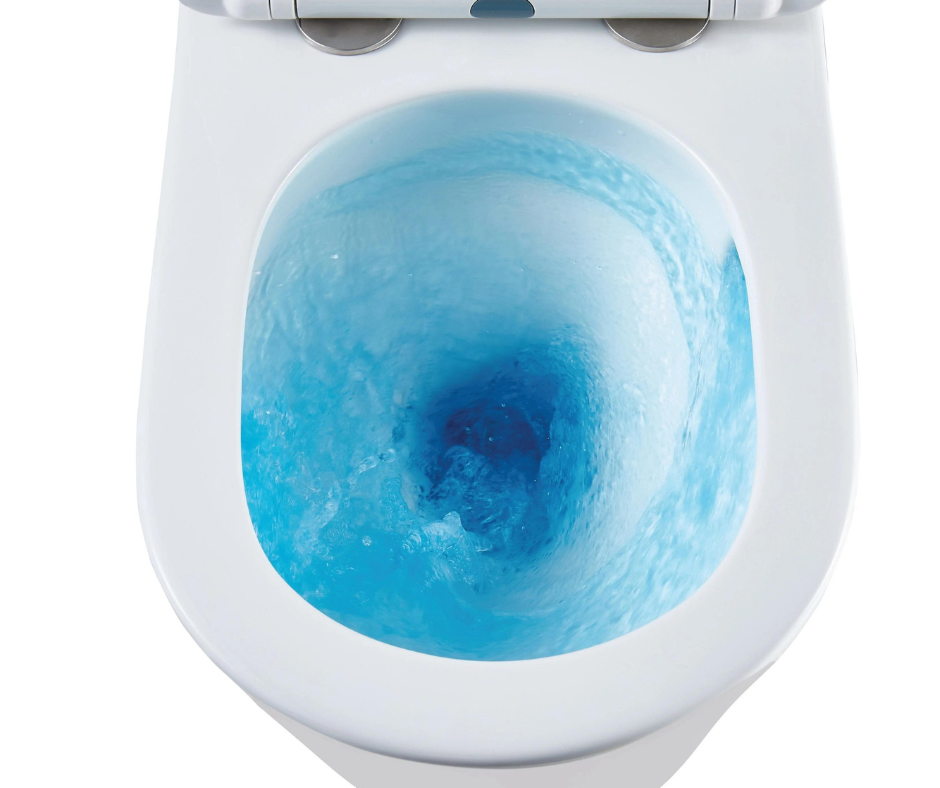Rimless Toilet: The Future of Bathroom Hygiene
Rimless toilets are changing the way we think about bathroom fixtures. These modern designs have no rim under the toilet bowl’s edge. Instead, they use a special flushing system that sends water around the bowl in a powerful swirl.
Rimless toilets are more accessible, clean, and hygienic than traditional toilets.
You might wonder how a rimless toilet works. The lack of a rim means there are no hidden spots for germs to hide. Water flows freely around the bowl, washing away waste more effectively.
This design also helps save water, as the flush is more efficient.
When shopping for a new toilet, a rimless model is worth considering. They cost about the same as regular toilets but offer better cleaning power.
Some people worry about splashing, but most rimless toilets are designed to prevent this issue.
Key Takeaways
- Rimless toilets have no rim, making them easier to clean and more hygienic
- The special flushing system in rimless toilets is more efficient and saves water
- You can find rimless toilets at similar prices to traditional models, with added benefits

What Is a Rimless Toilet?
Rimless toilets are a modern bathroom innovation that changes how water enters and cleans the bowl. Compared to traditional designs, they offer improved hygiene and easier cleaning.
Design and Functionality
Rimless toilets lack the enclosed rim found in standard toilets. Instead, they use a rear-mounted valve that pushes water horizontally along the sides of the bowl.
This creates a powerful, swirling flush that covers the entire surface.
The open design eliminates hidden spots where dirt and bacteria can build up. You can easily see and clean all parts of the bowl.
Rimless toilets often use less water than traditional models while providing effective flushing.
Some rimless designs have a quieter flush due to their efficient water flow. The absence of a rim also gives these toilets a sleek, modern look that many find appealing.
Rimless vs. Traditional Toilets
Rimless toilets offer several advantages over traditional designs. The main benefit is improved hygiene. With no rim to trap germs and limescale, rimless toilets are much easier to keep clean.
You’ll spend less time scrubbing and use fewer cleaning products. The open design lets you see all areas of the bowl, so no spots get missed during cleaning.
Traditional toilets have a rim that can be hard to clean underneath. This hidden area can harbor bacteria and unpleasant odors. Rimless toilets solve this problem by eliminating the rim.
Rimless models’ direct flush often provides better bowl coverage, which can lead to a cleaner toilet after each use.
While both types work well, many find rimless toilets to be a more hygienic choice.

Benefits of Rimless Toilets
Rimless models offer several advantages over traditional models. They improve bathroom hygiene, make cleaning easier, and help save water. Let’s explore these key benefits in more detail.
Hygiene and Cleanliness
Rimless models are more hygienic than regular toilets. The open design prevents germs and bacteria from hiding in hard-to-reach spots.
Water flows directly into the bowl, covering the entire surface. This powerful flush removes waste more effectively.
A rimless toilet will result in fewer stains and less buildup, as the smooth surface leaves nowhere for dirt to accumulate.
This design reduces the risk of unpleasant odors in your bathroom.
Rimless toilets also stay cleaner between deep cleans. The improved flushing action keeps the bowl fresher for longer periods.
Ease of Cleaning
Cleaning a rimless model is much simpler than scrubbing a traditional model. The open design gives you easy access to all parts of the bowl.
You can see and reach every surface without struggle.
You won’t need special tools or harsh chemicals to clean your rimless toilet. A quick wipe with a cloth or sponge is often enough.
The smooth surface prevents limescale and mineral deposits from sticking.
With a rimless model, regular cleaning takes less time and effort. You’ll spend less time on your knees scrubbing hard-to-reach areas.
Water Efficiency and Savings
Rimless models are designed to use water more efficiently. Many models flush effectively with less water than traditional toilets. This can lead to significant water savings over time.
After switching to a rimless toilet, you might see a decrease in your water bills. Some designs use as little as 4.5 liters per flush, compared to 6 liters or more for standard toilets.
The efficient flushing system of rimless toilets often requires fewer double flushes, further reducing water usage and helping conserve this valuable resource.

Installation and Maintenance
Rimless models are easy to install and maintain. They offer simple cleaning and better handling of hard water deposits than traditional models.
Installing Different Models
Back-to-wall and wall-hung Rimless models need different installation methods. Back-to-wall models sit on the floor and connect to the wall.
You’ll need to attach the toilet to the floor and connect it to the waste pipe.
Wall-hung toilets are mounted directly on the wall. They need a strong support frame inside the wall. This frame holds the toilet and hides the tank.
For both types, follow the manufacturer’s instructions. Check that all seals are tight to avoid leaks. Test the flush system before finishing the installation.
Dealing with Hard Water Deposits
Rimless toilets make cleaning hard water stains easier. The smooth bowl surface lets you reach all areas.
To clean, use a toilet brush and mild cleaner regularly. For tough stains, try a mix of vinegar and baking soda. Let it sit for 30 minutes, then scrub and flush.
To prevent buildup, wipe the bowl dry after cleaning. You can also use a water softener to reduce mineral deposits.
For ongoing care, flush the toilet often to keep water flowing and avoid stains.

Choosing the Right Rimless Toilet
Picking a Rimless model involves looking at key factors like price, style, and features. You’ll want to weigh the pros and cons to find the best fit for your bathroom.
Considerations for Purchase
Check the flush power and water usage when shopping for a rimless model. Look for models that clean well with less water.
Measure your space carefully to ensure a good fit. Pay attention to the height—comfort-height toilets are taller and easier for some to use.
Bowl shape matters, too. Round bowls take up less space, while elongated ones offer more comfort.
Consider extras like soft-close lids or built-in bidets if those appeal to you.
Price Points and Budgeting
Rimless toilets are available at a range of prices. Basic models start around $200-$300, while mid-range options with more features cost $400-$700.
High-end rimless toilets can go over $1000. Set a budget based on your needs and what you can afford.
Remember to factor in installation costs if you’re not doing it yourself.
While pricier models often have better quality and more features, good rimless toilets can also be found at lower price points.
Styles and Design Inspiration
Rimless toilets come in many styles to match your bathroom decor. You can choose from sleek modern designs or more traditional looks.
Wall-hung rimless toilets save space and look very modern. One-piece rimless toilets have a smooth, easy-to-clean shape.
Two-piece models offer more style options and can be easier to install.
For colors, white is classic, but you can find black, gray, or even colorful rimless toilets.
Look at design magazines or home improvement websites for ideas that fit your taste.
Environmental Impact and Sustainability
Rimless toilets offer significant benefits for the environment and sustainable living. They use less water and stay cleaner, helping you reduce your home’s ecological footprint.
Water Consumption Reduction
Rimless toilets use less water per flush than traditional models. Most rimless designs need only 1.28 gallons per flush, compared to older toilets that use up to 6 gallons.
This can save thousands of gallons of water each year in your home.
Some ultra-efficient rimless toilets use as little as 0.8 gallons per flush. Choosing a water-efficient rimless toilet can reduce water bills and help conserve this vital resource.
Dual-flush options let you use even less water for liquid waste. This feature gives you more control over your water usage.
Contribution to a Cleaner Environment
Rimless toilets have a smoother interior that’s easier to clean. This design reduces the need for harsh cleaning chemicals that can harm waterways.
This also means you’ll use less toilet paper with a rimless model. The powerful flush cleans the bowl more thoroughly, so you need fewer wipes to feel clean.
Less paper waste means fewer trees are cut down, and less strain is placed on sewage systems. This helps protect forests and keeps rivers and oceans cleaner.
The hygienic design of rimless toilets also reduces bacteria growth, leading to a healthier home environment and reducing the spread of germs.

